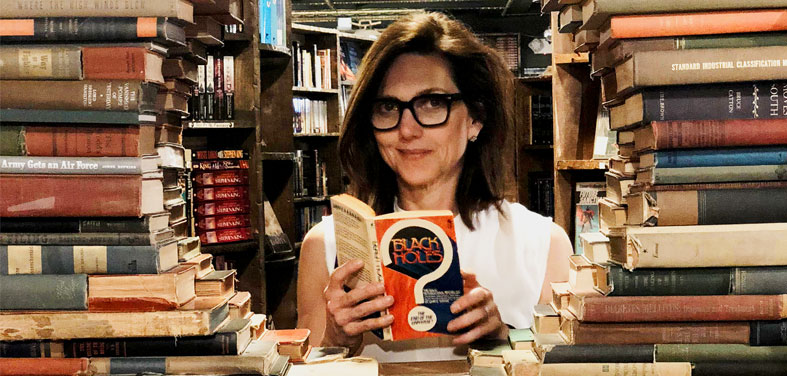

Book List: Creativity and Discovery
I believe innovation comes from the unexpected collision of ideas. We need collaboration between diverse people for that to work. But it also helps to have as diverse a population of ideas knocking around in our own heads first. The more disparate, diverse, and weird the better.
Creativity enriches our work and our lives, but it can often feel elusive. It can be difficult to summon your most creative thinking every time you need it. But it’s not impossible to do so. I’m sharing books about the creative and discovery process. Be they a dancer like Twyla Tharp or a business executive like Ed Catmull, these authors each have unique perspectives on how to build a framework for creativity and discovery into your life.
Book List:
The Creative Habit – Twyla Tharp
Twyla Tharp is an acclaimed artist, dancer, and choreographer. Her book, one of my favorites, shares her strategies for maintaining consistent creativity, from physical activities to writing exercises.
From The Creative Habit: “In the end, there is no ideal condition for creativity. What works for one person is useless for another. The only criterion is this: Make it easy on yourself. Find a working environment where the prospect of wrestling with your muse doesn’t scare you, doesn’t shut you down. It should make you want to be there, and once you find it, stick with it.”
Orbiting the Giant Hairball – Gordon MacKinzie
The book’s subhead explains one of the reasons I like this book: “A corporate fool’s guide to surviving with grace.” In this creative “cult” classic, MacKenzie, a former greeting-card creative director, uses illustration and practical advice to make important points about what stands in the way of creativity.
From Hairball:
“To be fully free to create, we must first find the courage and willingness to let go:
Let go of the strategies that have worked for us in the past…
Let go of our biases, the foundation of our illusions…
Let go of our grievances, the root source of our victimhood…
Let go of our so-often-denied fear of being found unlovable.”
Big Magic: Living Beyond Fear – Elizabeth Gilbert
Gilbert’s prose is electric and empowering. Big Magic is an inspiring read about why you should abandon fear and embrace your curiosity as a conduit for creativity.
From Big Magic: “Follow your own fascinations, obsessions, and compulsions. Trust them. Create whatever causes a revolution in your heart.”
Originals: How Non Conformists Move The World – Adam Grant
Grant taps research to show how anyone can spot opportunities for change and unleash their originality at work.
From Originals: “The hallmark of originality is rejecting the default and exploring whether a better option exists. It turns out to be far less difficult than I expected.”
Make room for discovery is a favorite mantra. Smith’s clever book unlocks the joy of wandering.
Smith writes: Wandering is not about a specific place or destination, getting from one place to another, or movement as a means to an end. Instead, it’s about letting the soul and mind roam.
Atlas Obscura – Joshua Foer & Dylan Thuras
Where to wander? Tap this explorer’s guide to surprising places built for the curious
The authors write: “We wanted a way of finding the curious, out-of-way places – the kinds of destinations that expand our sense of what is possible.”
Leonardo da Vinci — Walter Isaacson
Isaacson has written definitive biographies on some of the most creative minds in history. The life of Leonardo my be my favorite because of his unending curiosity and living life at the intersection of both human and science.
From Leonardo: “It had long since come to my attention that people of accomplishment rarely sat back and let things happen to them. They went out and happened to things.”
Powers of Two — Joshua Wolf Shenk
We often think about extraordinary creative individuals, but we sometimes forget creative collaborators. Joshua Wolf Shenk examines the chemistry of some of the most innovative duos ever, including Jobs & Wozniak and Lennon & McCartney.
From Powers of Two: “The individuals in great dyads will be very different from each other and very much alike. These simultaneous extremes generate the deep rapport and energizing friction that define a creative pair.”
Creativity Inc — Ed Catmull and Amy Wallace
Catmull, a Pixar co-founder, has given us a gift with his generous and thoughtful book about managing creative teams. Though managers are the primary audience for this book, anyone who works with creative people can learn from it.
From Creativity Inc.: “If you give a good idea to a mediocre team, they will screw it up. If you give a mediocre idea to a brilliant team, they will either fix it or throw it away and come up with something better.”